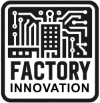The DARPA Subterranean Challenge looks to enhance the autonomy of robotics systems to rapidly explore underground environments — both on Earth and in space. It aims to accelerate state-of-the-art research for the military, commercial industry, and the government. To compete, teams have to develop fully autonomous systems to explore subsurface voids with a dual focus on planetary exploration and terrestrial applications, such as search and rescue in mines, caves and after natural disasters.
DARPA Subterranean Challenge※は、ロボットシステムの自律性を高めて、地球と宇宙の両方の地下環境を迅速に探索することを目的としています。これは、軍事、商業産業、および政府のための最先端の研究を加速することを目的としています。競争するには、チームは完全自律システムを開発して、地雷、洞窟、自然災害後の捜索救助など、惑星探査と地上アプリケーションに二重の焦点を当てて地下の空洞を探査する必要があります。
※DARPA Subterranean Challenge…米国防高等研究計画局(DARPA)が主催するロボットコンテスト
Team CoSTAR is a collaboration between the NASA Jet Propulsion Laboratory (JPL), Massachusetts Institute of Technology (MIT), California Institute of Technology (Caltech), Korea Advanced Institute of Science and Technology (KAIST), and Sweden’s Luleå University of Technology (LTR). With a team of 60 engineers from around the world, CoSTAR is one of ten teams participating in Defense Advanced Research Projects Agency’s (DARPA) three-year, four-part Subterranean Challenge. The challenge comprises three circuits — the Tunnel Circuit, the Urban Circuit, and the Cave Circuit — followed by the Final Event, which incorporates all three environments. If successful, the team would be granted $2 million to go towards funding future research projects. Team CoSTAR has finished second in the Tunnel Circuit and first in the Urban Circuit, and at the time of writing, is working towards competing in the Cave Circuit and Final Event.
Team CoSTARは、NASA ジェット推進研究所(JPL)、マサチューセッツ工科大学(MIT)、カリフォルニア工科大学(Caltech)、韓国科学技術院(KAIST)、スウェーデンのルレオ工科大学(LTR)による共同チームです。 CoSTARは、世界中から60人のエンジニアからなるチームを擁し、米国防高等研究計画局(DARPA)の3年間4部構成の地下チャレンジに参加している10チームの1つです。チャレンジは、トンネルサーキット、アーバンサーキット、ケーブサーキットの3つのサーキットで構成され、その後に3つの環境すべてを組み込んだファイナルイベントへと続きます。成功した場合、チームには将来の研究プロジェクトへの資金提供に向けて200万ドル(約2億円)が与えられます。チームCoSTARはトンネルサーキットで2位、アーバンサーキットで1位に終わり、現在、洞窟サーキットとファイナルイベントでの競争に向けて取り組んでいます。

Each circuit’s terrain is vastly different. Some challenges are set on rough terrain, some include low-light scenarios, and some even include flights of stairs. The autonomous robots must be able to navigate in poor conditions, which, during testing, often results in them falling down and critical parts breaking. Not only did team CoSTAR need to be prepared ahead of time with an impact-resistant, lightweight autonomous system, but they also needed to perform quick field maintenance for broken parts and rapidly iterate on designs in between runs to keep ahead of the competition. If a part were to fail in the field, it could result in CoSTAR not being able to complete the circuit. The team is frequently pushing into the unknown, so they need the necessary tools to react quickly.
各サーキットの地形は大きく異なります。いくつかの課題は起伏の多い地形に設定され、いくつかは暗いシナリオを含み、いくつかは階段の飛行を含みます。自律型ロボットは、テスト中に転倒して重要な部品が破損することが多いので劣悪な条件でもナビゲートできる必要があります。チームCoSTARは、耐衝撃性のある軽量の自律システムを事前に準備する必要があるだけでなく、壊れた部品の迅速なフィールドメンテナンスを実行し、実行の合間に設計を迅速に繰り返して、競合他社に先んじる必要がありました。部品が現場で故障した場合、完走できなくなる可能性があります。チームは頻繁に未知のものを押し込んでいるため、迅速に対応するために必要なツールが必要です。
The team is working with Boston Dynamics, and has several Spot robots on loan for the competition. CoSTAR’s engineers and designers had to rapidly design and create extra components such as brackets and enclosures to ensure the Spot could successfully complete the circuit. Previously they used wood, machining, or laser cutters to get the parts made. They knew they needed another option to keep ahead of the other teams, and 3D printing was the perfect solution for quick iterations and fixing parts at the point of need.
チームはボストンダイナミクスと協業しており、レースのためにいくつかのスポットロボットが貸し出されています。 CoSTARのエンジニアと設計者は、スポットロボットがレースを完走できるように、ブラケットやエンクロージャなどの追加コンポーネントを迅速に設計および作成する必要がありました。以前は、木材、機械加工、またはレーザーカッターを使用して部品を製造していました。彼らは、他のチームに先んじるために別のオプションが必要であることを知っていました。3Dプリントは、必要なときにすばやく反復して部品を修正するための完璧なソリューションでした。
To address this need, the team brought on a simple PLA 3D printer. However, it was only capable of printing parts that were useful for prototyping, not for eventual production — essentially, the parts weren’t strong enough to be used out in the field by a robot going into uncertain terrain with the possibility of critical components being damaged. One crucial example is the expensive lidar sensor on top of the robot, which must be protected at all costs. The material used to protect it must possess great stiffness and vibration dampening properties in order for the signal from the sensor to provide valid, usable outputs. The team also found that their PLA 3D printer was producing inaccurate parts with poor surface finish, so they were spending far too much time sanding down the parts after they were printed. What they needed was a robust system that could be brought into the field to rapidly prototype designs and then print the production parts after testing, without the hassle of time-consuming post-processing.
このニーズに対応するために、チームはシンプルなPLA3Dプリンターを導入しました。ただし、最終的な生産ではなく、プロトタイピングに役立つパーツしか印刷できませんでした。なぜなら重要なコンポーネントが破損する可能性があるような不安定な地形に入るロボットに使用できるほど頑丈ではなかったからです。例えばロボットの上部にある高価なLIDARセンサー、これは、絶対に保護する必要があります。それを保護するために使用される材料は、センサーからの信号が有効で使用可能な出力を提供するために、優れた剛性と振動減衰特性を備えている必要があります。チームにとってPLA 3Dプリンターの使用は表面仕上げの悪い不正確な部品であり、そのため印刷後に部品を研磨するのに非常に多くの時間を費やしていました。彼らが必要としていたのは、時間のかかる後処理の手間をかけずに、設計を迅速にプロトタイプ化し、テスト後に製造部品を印刷するために現場に持ち込むことができる堅牢なシステムでした。

Fortunately, the team had access to a Markforged 3D printer. As several CoSTAR team members work for JPL, the team was already armed with the knowledge that Markforged 3D printers and powerful cloud-connected Eiger software could produce lightweight, strong, functional parts, without any geometry constraints. The team realized that Markforged was a robust choice to achieve all their requirements. The team found that the brackets and mounts printed using the Markforged platform actually outperformed aluminum counterparts, and were much lighter. On top of that, the parts the team 3D printed on their Markforged printer could be knocked and reused without any failure. The team printed a 3D printed cage for the team’s $7,000 lidar sensor using the team’s many Markforged 3D printers and continuous carbon fiber reinforced material. While the part took some knocks, the lidar sensor never took any damage.
幸い、チームはMarkforged3Dプリンターに出会うことができました。何人かのCoSTARチームメンバーがJPLで働いているので、チームはMarkforged3Dプリンターと強力なクラウド接続Eigerソフトウェアが形状の制約なしに軽量で強力な機能部品を製造できるという知識をすでに持っていました。チームはMarkforgedがすべての要件を達成するための強力な選択肢であることに気づきました。チームはMarkforgedプラットフォームを使用して印刷されたブラケットとマウントが、実際にはアルミニウムの対応物よりも優れており、はるかに軽量であることを発見しました。その上、チームがMarkforgedプリンターで3D印刷した部品は、失敗することなくノックして再利用できました。チームは、チームの多くのMarkforged 3Dプリンターと連続炭素繊維強化材料を使用して、チームの7,000ドルのLIDARセンサー用に3Dプリントケージを印刷しました。数回の転倒でもLIDARセンサーは損傷を受けませんでした。
During the competition, the team increased the number of Markforged printers they had from one to three with the help of Markforged partner GovSmart. Markforged then sponsored the team in 2020 and provided a fourth printer. CoSTAR brought the printers out to the first two challenges, setting several of them up in their hotel rooms to produce parts overnight for field use the next day. Trust in their 3D printers was extremely important for the team, as they would often spend long nights designing parts with the hope to test and integrate them the next morning. Fortunately, their Mark Two 3D printers only delivered quality products.
競技中、チームはMarkforgedのパートナーであるGovSmartの助けを借りて、所有しているMarkforgedプリンターの数を1台から3台に増やしました。その後、Markforgedは2020年にチームを後援し、4台目のプリンターを提供しました。 CoSTARは、最初の2つの課題にプリンターを持ち込み、ホテルの部屋にいくつかのプリンターを設置して、翌日のフィールドで使用するために一晩で部品を製造しました。チームにとって、3Dプリンターへの信頼は非常に重要でした。彼らは、翌朝テストして統合することを期待して、部品の設計に長い夜を費やすことが多かったからです。幸い、Mark Two3Dプリンターは高品質の製品しか提供していませんでした。

The DARPA Subterranean Challenge may just be a competition for some, but it’s far more than that for CoSTAR. For them, the challenge is a starting point to work towards enabling underground exploration on the moon, Mars, and even some of the moons of Saturn and Jupiter. By building the robotic capability for the competition, the team hopes to enable future NASA JPL missions for exploring underground environments to learn about the development of life, whether there was life on other planets, and if there’s potential for human habitation in the future. And additive manufacturing technology is helping them to prove that new technologies can get them there.
DARPA Subterranean Challengeは、一部の人にとっては単なる競争かもしれませんが、CoSTARにとってはそれをはるかに超えています。彼らにとっての挑戦は、月、火星、さらには土星と木星のいくつかの衛星での地下探査を可能にするための出発点です。チームは、競争のためのロボット機能を構築することにより、地下環境を探索するための将来のNASA JPLミッションで、生命の発達、他の惑星に生命が存在したかどうか、将来人間が居住する可能性があるかどうかを学習できるようにしたいと考えています。そして、積層造形技術は、新しい技術がそれらを実現できることを証明するのに役立っています。

